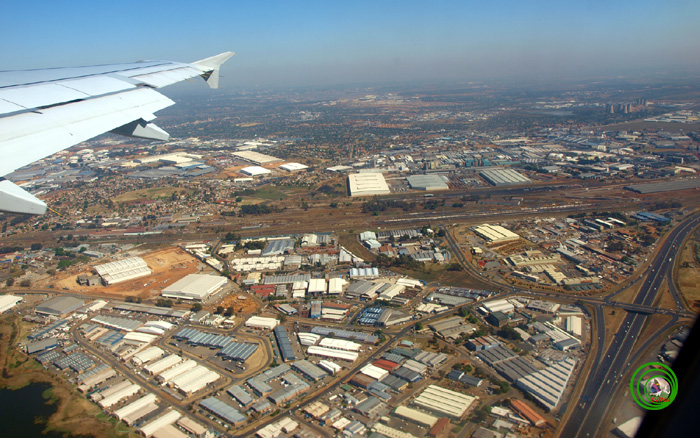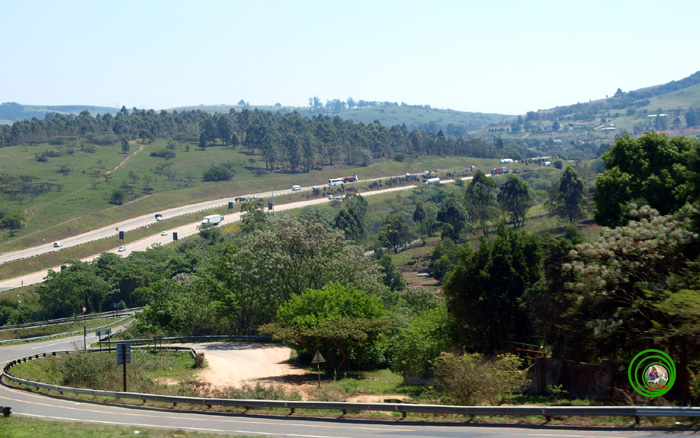|
TEARS OF RHINO IN SOUTH AFRICA
By: Phung My Trung (Vncreatures.net) and Dang Linh Huong (Traffic)
Part I: Greetings, beautiful South Africa !
Part II: Live capturing rhino for … protection
Part III: Rhino releasing…
Part IV: Tears of rhino or human crime
Part IV: A shameful misleading belief
GREETINGS, BEAUTIFUL SOUTH AFRICA !
There was place where you just visited once but left you with fantastic memories about the people, cultures, customs, and natural landscapes. South Africa is typically one of them. Whoever you are, it’s easy for you to acknowledge those fantastic and amazing experiences in the journey to discover this wild land of South Africa.
I had opportunity to visit South Africa thanks to win a Grant prize on the writing competition on “No illegal trade and consumption in endangered wildlife, their parts and derivatives, contributing to the protection of biodiversity in Viet Nam”. This surprising prize gave me, an amateur reporter and a person working on biodiversity preservation, a wonderful lifetime experience in South Africa to meet and share experiences with colleagues working in the southern land of African continental. However, in that amazing trip, there were still concerns…
Accompanied with me on that trip, there was a reporter from the national Vietnam Television (VTV) and a TRAFFIC staff who was interpreter for the delegation. After nine-hour flight with two transits from Hanoi, we landed on the Tambo International Airport (Johannesburg, the Republic of South Africa) at 06.30 local time. Being the most populated city in South Africa with the total population of 11 million, however, Johannesburg is also recognized as one of the best green cities in the world.
Filling with emotions, I whispered: Greetings, beautiful South Africa!
|

|
|
“What is your purpose to visit South Africa?”
At the Tambo International Airport, when processing the immigration procedures, custom officer received my passport and stared at me. “What is your purpose to visit South Africa? How long will you be here? Who are travelling with you?… he asked with sturdy and unfriendly voice and a cold face. A bit surprised but immediately I guessed the reasons for his attitude. My thoughts were confirmed just couple days later when I had chances to work with my South African colleagues and several wildlife conservation organizations operating in this country.
Trying to ignore his attitude, I politely replied: “I am here at the sponsor of the raising awareness on rhino conservation program funded by the Wildlife Trade Monitoring Network (TRAFFIC), the World Wide Fund for Nature (WWF) and other South African conservation organizations”. Right after receiving my explanation, he quickly stamped the entry permission and returned my passport with completely different attitude.
We continued to move to Durban Airport of KwaZulu-Natal – a province of South Africa that shares the borders with Mozambique, Swaziland, and Lesotho. KwaZulu-Natal owns two world natural heritages recognized by UNESCO: Isimangaliso Wetland Park and uKhahlamba/Drakensberg Park. However, our first destination was a private game reserve.
Becky, a South African beautiful female friend picked us up at the Durban airport and introduced an overview about the itineraries during the four-hour driving to the game reserve. In South Africa, the traffic system is UK-style designed then cars are all followed left-hand driving rules. Even though the car was on 110km per hour but I felt very secure and comfortable since it has very good transport infrastructure and low noise. Drivers in South Africa respect the traffic regulations, hardly to see them honking, speeding, or passing illegally. Becky told us, in South Africa, traffic violators would be strictly and heavily punished, even prosecuted. Moreover, no one wants to be listed into the highway patrol police’s blacklist or to waste time for being questioned by authorities. However, by the way she shared information, I understood that, more importantly, law compliance is one of the first indicators for a civilized society…
|

|
|
Welcome visitors from the other side of the global!
At this time, it’s Spring in South Africa. There are many kinds of plants blossoming along the roads, making an endless colorful picture. Schools of live cattle were scattering on the green field, lasting for miles along the road. Sometimes, it can be seen several old and antique castles with bell towers locating on top of the sloping hills, surrounded by cress green bushes. One of the most popular blossom plants in South Africa this season is purple Poinciana Jacranda mimosaefolia. All roads and buildings are covered by the light purple color remarkably highlighted in the blue sky.
The furthest into the land, the drier the land will be and the clearer sign of desertification. Plants gradually change color from green into fading yellow grass field. We hardly saw several small water reservoirs surrounded with plainly green grass.
|

|
|
It’s high noon. The sun was high and shines. The car thermometer showed the temperature was at over 40°C. Schools of cattle were hiding under the shadows of trees or by the lakes. In spite of smoking on the tarmac road, streamline of cars were still flowing on the highway. And the only people working under this terrible baking heat of subtropical sun were workers who completely wrapped up in repairing the broken roads with specialized equipment.
We arrived to the private game reserve at 2 p.m. The consultant on black rhino conservation – Dr. Simon Morgan - (of Wildlife ACT Fund – A South African Endangered Species Conservation program) warmly welcomed us. Despite being tired and hungry after a long journey, we were all excited when Simon invited us to visit the game preserve by specialized open vehicle. We had lunch right in the car so that we had more time to eyewitness species that we only knew by television and Internet.
Welcoming the visitors who came from the other side of the global was the couple of African orchids (Struthio camelus) that were having their meals; Blue wildebeest (Connochaetes taurinus) were freely chewing grass; African buffalo (Syncerus caffer) with the number was up to hundreds of individual were moving to their new grass field; Nearby there was a family of four Cheetah (Acinonyx jubatus) that the female mother was teaching her young ones the hunting techniques combined with fast, strong, and powerful movements… Somewhere in a hidden place, a female African lion (Panthera leo) was enjoying her dinner which was what is left of a wild buffalo after the male African lion finished his enormous meal with the best parts… The whole scenery indicated a peaceful and quiet environment.
Time flew fast while we were enjoying that wonderful and breath-taking wilderness scenery. Sunset was coming with the darkness falling onto the savanna... The herd of Plains zebra (Equus quagga), Blue wildebeest (Connochaetes taurinus), and the Nyala (Tragelaphus angasii)… started looking for a place to sleep. They travelled while the last sun light was dimming and fading away. The temperature was getting lower with hard and cold wind starting to blow. …
|

|
|
|
| |
|
|
On the way back to the hotel, while our delegation was still missing those wonderful and amazing scenery, Mr. Clarke, conservation director of the private game reserve disclosed: “Tomorrow, we will invite you all to participate in rhino live capturing action from Imfolozi – a game reserve located several hundred kilometers away from here and releasing rhinos to a secret location in this game reserve.” We were so excited and looked forward to having surprises in the coming time after the first impressive day on the country located on the South of the Africa continental.
Box:
In South Africa, along with big National Parks, there are many private game reserves. People can pay to rent a bush with proper area (about 10,000 hectares) to manage and explore, after having an agreement from local leaders and community. The renter of the game reserve has responsibilities of generating, managing, and preserving wildlife living in this bush area and can receive benefits resulted from wildlife hunting and ecotourism activities. Local people and authorities will jointly participate in managing and monitoring the bush protection, wildlife preservation with investors. There have been cases that land renters purchased the whole areas and bush natural resources within the game reserve with the commitments of generating jobs for indigenous people. |
|
![]()
![]()
